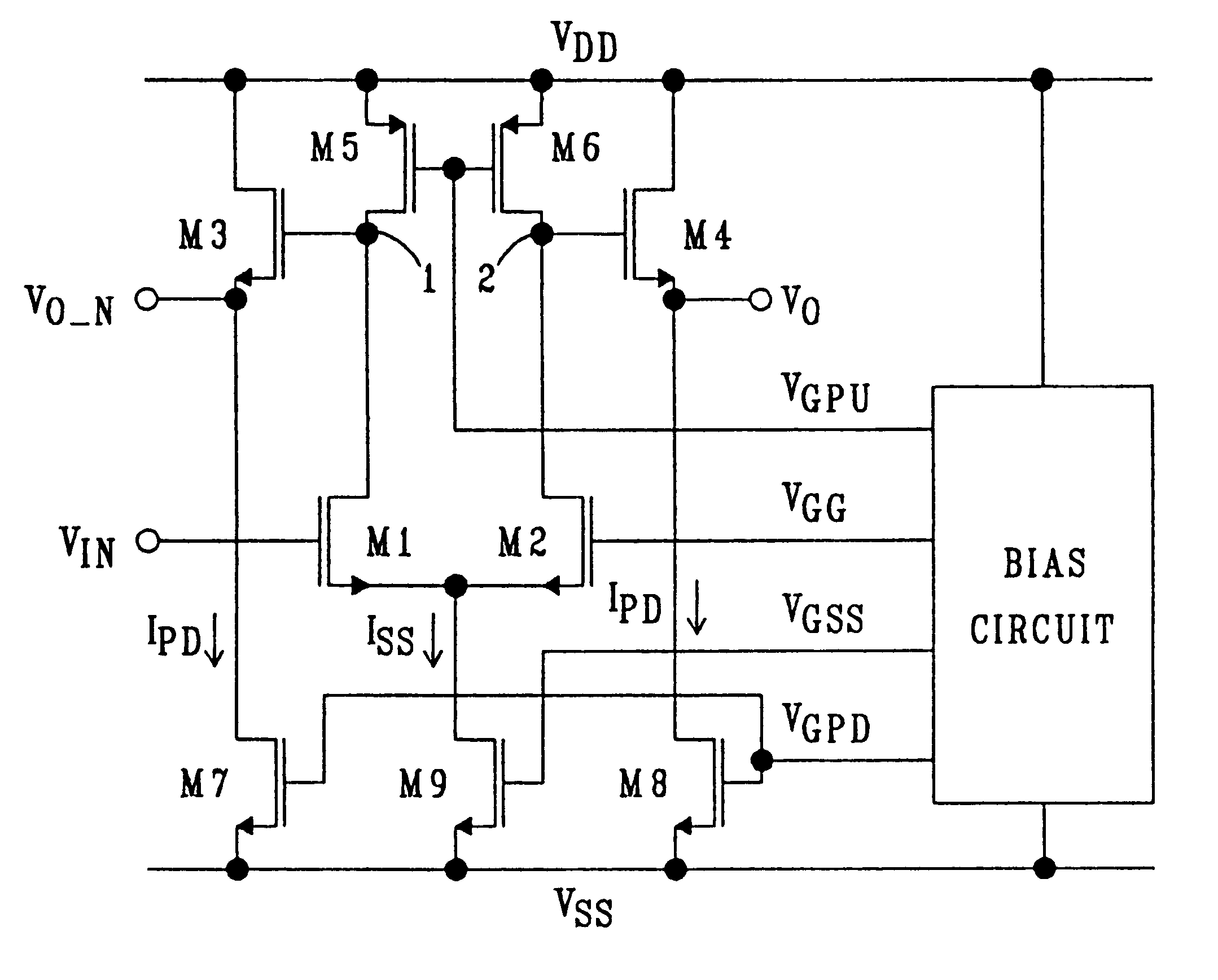Source-coupled logic with reference controlled inputs
a source-coupled logic and reference control technology, applied in logic circuit coupling/interface arrangement, instruments, pulse techniques, etc., can solve the problem of not fulfilling the promise of high speed that one, current-mode logic, uses a differential form of logic that is not as flexible and easy-to-use as reference controlled or "single-ended" logi
- Summary
- Abstract
- Description
- Claims
- Application Information
AI Technical Summary
Problems solved by technology
Method used
Image
Examples
Embodiment Construction
The essential elements of an inverter / buffer circuit using the reference controlled source-coupled logic (SCL) of this invention are shown in FIG. 3. (See also [6].) The operation of this circuit is similar to that of the ECL inverter / buffer of FIG. 1. When the input voltage, V.sub.IN, is less than that of a reference voltage, V.sub.GG, the common source bias current, I.sub.SS, flows through transistor M2 but not M1 resulting in a low voltage at the non-inverting output, V.sub.O, and a high voltage at the inverting output, V.sub.O.sub..sub.-- .sub.N. When V.sub.IN >V.sub.GG the opposite occurs: V.sub.O assumes a high, logic 1, voltage and V.sub.O.sub..sub.-- .sub.N assumes a low, logic 0, voltage.
One difference between this invention and the prior art of FIG. 2 is the use of a voltage reference, V.sub.GG, supplied by a bias circuit. The importance of this voltage reference is illustrated in FIGS. 4 and 5. Both figures show the essential elements of a three-input OR / NOR gate. A refer...
PUM
 Login to View More
Login to View More Abstract
Description
Claims
Application Information
 Login to View More
Login to View More - R&D
- Intellectual Property
- Life Sciences
- Materials
- Tech Scout
- Unparalleled Data Quality
- Higher Quality Content
- 60% Fewer Hallucinations
Browse by: Latest US Patents, China's latest patents, Technical Efficacy Thesaurus, Application Domain, Technology Topic, Popular Technical Reports.
© 2025 PatSnap. All rights reserved.Legal|Privacy policy|Modern Slavery Act Transparency Statement|Sitemap|About US| Contact US: help@patsnap.com



